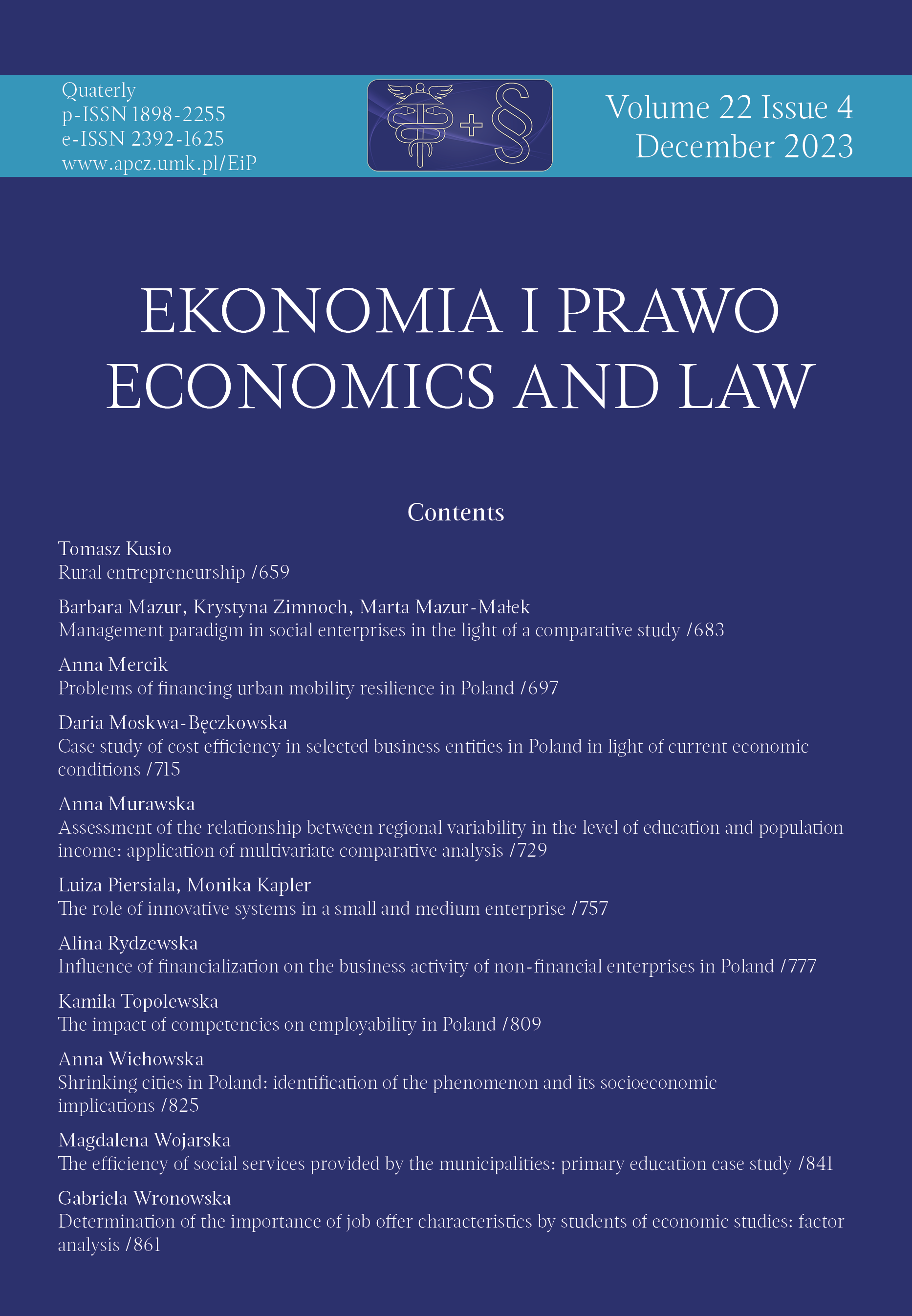Assessment of the relationship
between regional variability in the level
of education and population income:
application of multivariate comparative
analysis
Assessment of the relationship
between regional variability in the level
of education and population income:
application of multivariate comparative
analysis
Author(s): Anna MurawskaSubject(s): Social development, Rural and urban sociology, Socio-Economic Research
Published by: Wydawnictwo Naukowe Uniwersytetu Mikołaja Kopernika
Keywords: education; income; inequality; multivariate analysis; synthetic measure;
Summary/Abstract: Motivation: The relationship between the level of education and population income lies at the heart of current scientific and political debates on the social and economic development of countries. The issue is an important one, as the gap between countries in this regard is large and has widened even further amid the current economic crisis that started in 2020 and is a result of, among others, the Covid-19 pandemic.Aim: The present article aimed to undertake a multivariate comparative analysis of population level of education (EL) and income (IL), construct synthetic measures of the phenomena under study, rank and classify the objects/countries studied, and investigate whether significant interdependencies exist between the level of education and income inequality. Additionally, an effort was made to determine the scale of changes and variability in the phenomena explored, both prior (before 2020) to and during the economic crisis (years 2020–2021).Results: The study confirmed the existence of a significant interdependence between populations’ education level (EL) and income level (IL) variability across EU regions. The marginalization of and disparity among several of the EU(27) countries has intensified even further during the current economic crisis. Significant correlations exist between countries with high population incomes and the percentages of individuals holding tertiary-education qualifications as well as the adults pursuing further education. Concomitantly, as the percentage of young people not in education or employment falls, countries’ GDP and income levels increase, while income inequality and the risk of poverty decrease. The understanding of the aforementioned interdependencies is vital for the implementation of education policy as one of the biggest levers reducing educational disparities and thus income inequality in the population.
Journal: Ekonomia i Prawo. Economics and Law
- Issue Year: 22/2023
- Issue No: 4
- Page Range: 729-756
- Page Count: 28
- Language: English

